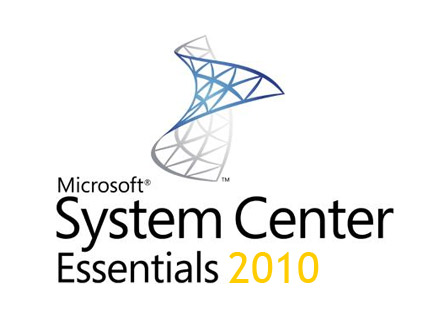'ZDNET Recommends': What exactly does it mean?
ZDNET's recommendations are based on many hours of testing, research, and comparison shopping. We gather data from the best available sources, including vendor and retailer listings as well as other relevant and independent reviews sites. And we pore over customer reviews to find out what matters to real people who already own and use the products and services we’re assessing.
When you click through from our site to a retailer and buy a product or service, we may earn affiliate commissions. This helps support our work, but does not affect what we cover or how, and it does not affect the price you pay. Neither ZDNET nor the author are compensated for these independent reviews. Indeed, we follow strict guidelines that ensure our editorial content is never influenced by advertisers.
ZDNET's editorial team writes on behalf of you, our reader. Our goal is to deliver the most accurate information and the most knowledgeable advice possible in order to help you make smarter buying decisions on tech gear and a wide array of products and services. Our editors thoroughly review and fact-check every article to ensure that our content meets the highest standards. If we have made an error or published misleading information, we will correct or clarify the article. If you see inaccuracies in our content, please report the mistake via this form.
Microsoft System Center Essentials 2010 Beta 1


Microsoft System Center Essentials 2010 Beta 1
pros and cons
Introduction
IT professionals in medium-sized business face a unique set of challenges. They are often alone or in a very small team and don't have the luxury of saying "That's someone else's department"; they have to do everything IT related. Installing printer drivers, troubleshooting Exchange and making sure all computers have the latest patches are all in a day's work.
Naturally, they look for tools to automate and simplify their IT tasks, but packages such as CA Unicenter, IBM Tivoli and Microsoft System Center Operations Manager (SCOM)/Configuration Manager (SCCM) are enterprise level applications requiring specific hardware and high levels of expertise and maintenance. At the other end of the scale are low cost solutions that automate one particular task — software/hardware inventory with Spiceworks for example. The ideal solution is something which covers everything the big ones do, but packaged for an IT generalist audience. That product is Microsoft System Center Essentials (SCE), currently in beta testing for its third reincarnation: the 2010 version.
SCE is designed for organisations with up to 50 servers and 500 client computers, and combines hardware and software inventory, monitoring, software deployment, patch management and (new in 2010) virtualisation management, as well as comprehensive reporting. All of these capabilities are incorporated into a single console with an intuitive interface.
"One pane of glass" to monitor ALL servers, network devices and client computers.
(Credit: Paul Schnackenburg)
Installation is very easy, with detailed wizards holding your hand all the way; be aware the server needs to have at least 4GB of RAM.
Top ZDNET Reviews
Different parts of SCE can be spread across several servers.
(Credit: Paul Schnackenburg)
Monitoring
At the core of SCE's monitoring capabilities are Management Packs (MP), a set of rules and scripts for a particular product that captures the "knowledge" of how that application should behave and what to do when it doesn't. Every Microsoft server product has a corresponding MP, created by the product team responsible for the program itself. Many third-party MPs are also available: for hardware from Dell and HP, networking devices from Cisco, applications like BlackBerry and other operating systems like Linux. These MPs are created for SCE's larger sibling — Operations Manager — but work fine in SCE. A new feature in 2010 is that the "chattiness", ie, the number of alerts, is automatically turned down by about 50 per cent when an MP is installed in SCE compared to SCOM.
If you've never experienced monitoring at this level, it's the definitive early warning system. Without monitoring, usually the first you hear of a problem is when users call with complaints. With monitoring, you'll have alerts long before then, which means you can often fix minor problems before they turn into service outages. By capturing "best practises" in MPs, deep product knowledge is presented in an easy-to-understand fashion, which can change your IT support from reactive to proactive.
Wake up! Something's wrong with one of your servers.
(Credit: Paul Schnackenburg)
SCE 2007 installed about 70 MPs under the assumption that this would cover the vast majority of installed OSes, services and applications in most mid-sized business, with the option to install further MPs manually. SCE 2010 takes a different approach, only installing a handful of core MPs then looking at its inventory of your particular environment and only plugging in the MPs required for those applications and platforms. If you later add another server or application, SCE will prompt you to install the necessary MP.
Detailed hardware and software inventory is only one of the many features of SCE 2010. (Credit: Paul Schnackenburg)
If you add new client computers or servers to your environment, SCE can detect these, install the agent and automatically make them managed. New in SCE 2010 is the ability to create dynamic groups where new computers are automatically put in the right group based on particular characteristics, make and model for instance. The SCE console can be installed on several client workstations for remote access; for times when you're out of the office SCE can email/IM or send you an SMS with relevant alerts.
Not in the office? No problem — SCE lets you know about problems no matter where you are. (Credit: Paul Schnackenburg)
To avoid a planned server outage generating unnecessary alerts, use the new Maintenance Mode feature, which temporarily halts warnings related to the object.
Software deployment
It's a critical task when there are hundreds of client computers in your environment and making sure users have the right software to do their jobs. The traditional approach of manually starting the installation on each machine doesn't scale well beyond more than a few PCs, so a centralised solution is necessary. SCE 2007 can create packages based on MSI installation files that you then assign to the relevant client computers. Many set-up programs only come in an "exe" variant — fortunately, SCE 2010 supports creating packages from these. There's a bit more manual work, as you have to define which OS and architectures are supported, but this feature considerably broadens SCE's ability to deploy all needed software.
Patch management is built on top of Windows Server Update Services (WSUS), the free patch management product from Microsoft, but SCE 2010 adds a few bells and whistles. Rather than downloading the whole catalogue of available updates, SCE 2010 looks at what's in use in your environment and only gets what's necessary. Another issue with WSUS is that the size of the database grows over time; SCE 2010 adds a nifty wizard to schedule "clean ups" of old or superseded updates. SCE not only updates Microsoft's products; there are several third-party catalogues available, and you can also define your own.
For server applications, the addition of an "Authoring" tab provides an interesting feature: Distributed Applications monitoring. End users (and your boss) don't care about SQL Servers or Exchange Servers; they care about being able to do their job. Using this new tool set, you can model all the servers and applications that make up a particular service into one object for management and monitoring.
End-to-end service monitoring lets you know when there's a problem with any part of your applications. (Credit: Paul Schnackenburg)
Going virtual
The big Kahuna in SCE is undoubtedly the addition of virtualisation support. Essentially a scaled down and integrated version of System Center Virtual Machine Manager (SCVMM), this adds host management, Intelligent Placement and Physical to Virtual conversion (P2V). Both Windows Server 2003 with Microsoft Virtual Server 2005 and Windows Server 2008/2008 R2 with Hyper-V are supported hosts. If you point to a server as a virtualisation host and it doesn't have the corresponding platform installed, it'll automatically be added for you.
Once you have one or more host servers going, the next step is taking existing physical servers and converting them to virtual machines. SCE helps by identifying good candidates for converting to the virtual world. A simple wizard gathers information about the candidate server, installs a small agent and proceeds with the process. Afterwards, you can simply turn off the physical machine and start up the VM; users should notice no difference. The wizard is robust and a delight to work with, making a complex task easy.
Once you have VMs, the next question becomes which server to house them on. Intelligent Placement takes into account performance data from both hosts and the VM to recommend the best host to place the VM on.
Missing from the SCE implementation of SCVMM is management of VMWare's VirtualCenter/VSphere, so if you need that, the full SCVMM will need to be added.
Once you have some or all of your servers running as VMs, SCE 2010 doesn't differentiate how you manage the physical and virtual world — it's all the same.
Performance and Resource Optimisation (PRO) is a feature that lights up in SCVMM when SCOM is also installed in the environment. It allows for policy-based control of VMs: if a website is receiving higher than usual traffic, an additional web server VM can automatically be started, for example. PRO is not in the current beta of SCE 2010, but it looks like it'll be in the Release Candidate, which puts the concept of a "dynamic datacentre" in reach of medium businesses.
Conclusion
SCE 2010 is a key cornerstone for comprehensive IT management in a medium business. If you're in this category and are spending more time fighting fires than adding business value through IT, it's time to look at this very comprehensive and easy-to-use solution.